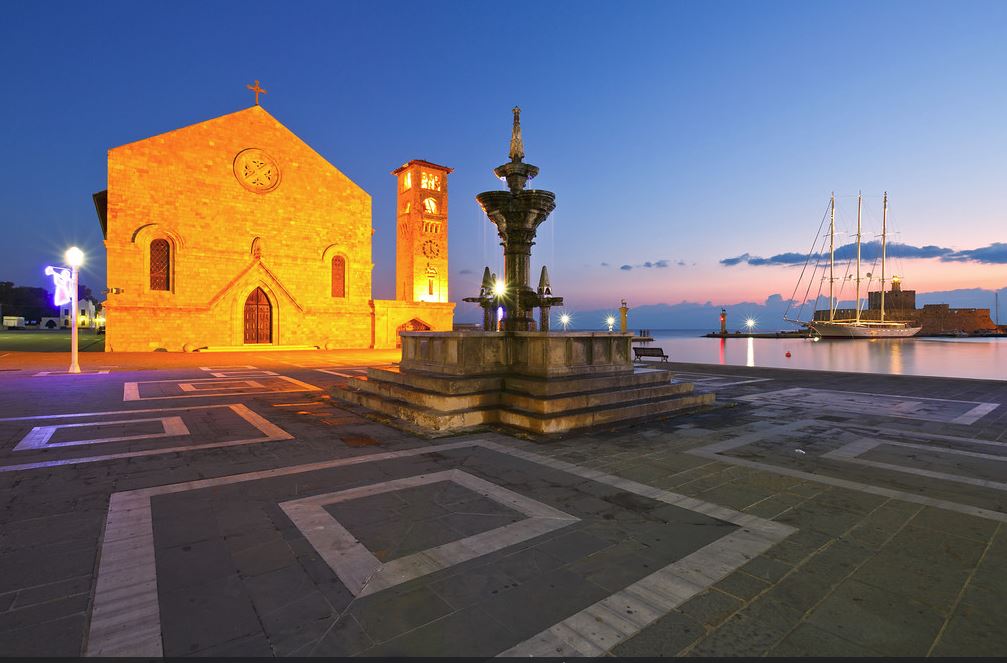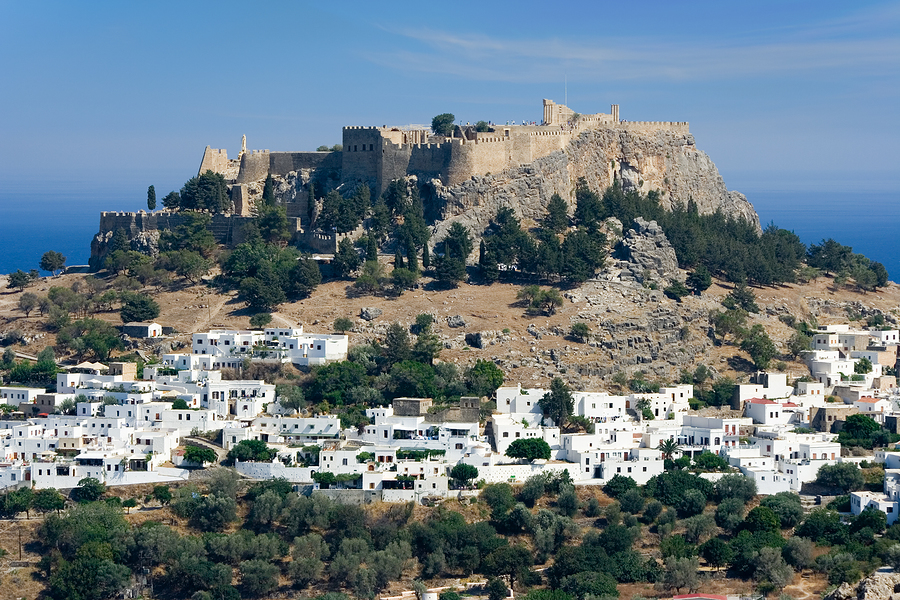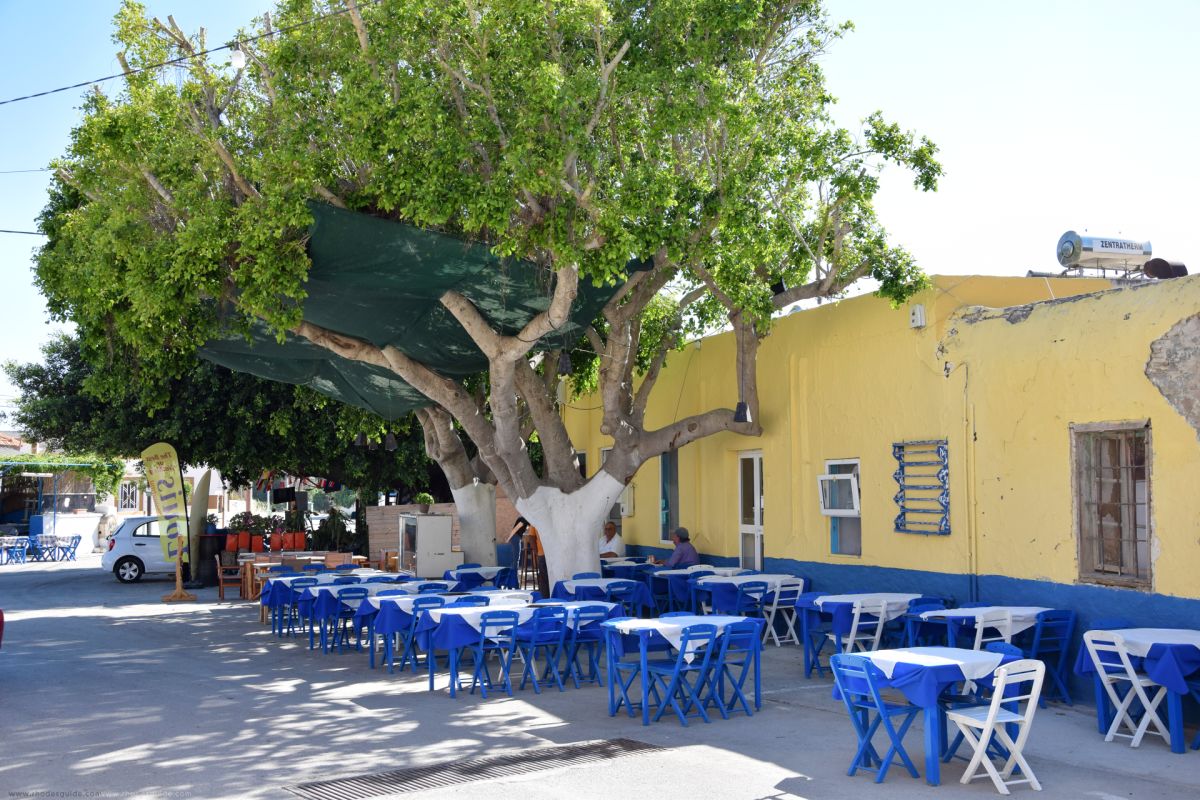- HOME
- Dodecanese
- Rhodes
- Rhodes Weather
Rhodes Weather
Rhodes weather is hot in summer and mild in winter, so read Greece Travel Secrets’ advice on the best time to visit Rhodes and why you should consider Lindos.
Rhodes not surprisingly has a Mediterranean climate with hot summers and cold winters. The vast majority of visitors to Rhodes descend in the summer months, especially in July and August, although this isn't really the ideal time to visit. Daytime temperatures reach into the 30s C (90s F), and even higher in recent years when Greece has had some scorching summer heatwaves. The record high is 41.2 C (106.2 F).
Even at night the temperature averages 72C (22F), which is fine when there's a cooling breeze, but not so fine when the air remains still and sticky. You might want to make sure your accommodation has air-conditioning.
Rhodes Weather: Best Time to Visit
Although in winter the island seldom sees a frost, the temperature can drop to the low 40s (5-6 C) and rain can fall any time between October and March. Unless you do simply want to lie on the beach beneath a blazing sun, the best times to visit are usually from April to June, and again from September to about the end of October.
Some Cool Rhodes Souvenirs
In May and September you are almost guaranteed at least 11 hours of sunshine per day, more in July and August, and in those two months there will probably be no more than a sprinkling of rain.
Late October is when the tourist season is starting to wind down, and some hotels and restaurants will close for a winter break. The traditional starting time is around Easter. Rhodes can be visited all-year-round, though, as not everywhere closes down. You’ll have plenty of choice of where to stay and eat in Rhodes Town.
Lindos Weather
Rhodes is a big-sized island of about 1,400 sq kms (541 sq miles) and the climate isn’t the same everywhere. The south-east of the island is warmer on average, and particularly around Lindos. It’s so warm here, in fact, that it’s one of the warmest places in Greece, even warmer than places further south and closer to Africa.
Latest Posts
-
Explore Vikos Gorge: Hiking, Rafting, and Food in Zagori
One of the most impressive canyons in Europe and one of Greece’s favorite mountain destinations, Vikos Gorge invites hikers and food lovers alike. -
Lefkada: The First Ancient Theater of the Ionian Islands Comes to Light
The first ancient theater ever discovered in the Ionian Islands is located in the heart of the ancient city of Lefkada, established before the end of the 7th century BC. -
5 Epic Island Hikes in Greece for Spring Explorers
This spring, five majestic peaks across Greece’s islands invite us to lace up our boots and discover a wilder side of island life. -
Greek Ferry Services to Halt on May 1 Due to Labor Strike
Ferries in Greece will remain docked for 24 hours on Thursday, May 1, as the Pan-Hellenic Seamen’s Federation (PNO) joins Labor Day mobilizations announced by the General Confederation of Greek Labor… -
Sifnos: Greece’s Hidden Culinary Star on the Rise
Sifnos, a Cycladic island, is gaining fame for its rich culinary heritage, especially the beloved melopita honey-cheese tart. -
Easter in the Mystical Castle of Monemvasia
In the castle town of Monemvasia, with its dramatic medieval backdrop and sea views, Easter is a deeply spiritual and atmospheric experience. -
Easter in Leonidio: A Tapestry of Light, Culture and Cliffs
In Leonidio, Easter comes alive with handmade hot air balloons in the sky and lanterns made from bitter oranges in the streets. -
The Lesser-Known Traditions of Greek Easter
Step off the beaten path this spring and discover the enchanting — and often surprising — Easter traditions found across Greece. -
April 9 Strike in Greece to Impact Public Transport, Ferries and Air Travel
Transportation and travel across Greece will face disruptions on Wednesday, April 9, as public transport, ferry and aviation workers join a nationwide strike called by Greek labor unions. -
Ancient Theater of Lefkada Brought Fully to Light Following Systematic Excavation
The Greek Culture Ministry has announced that the first ancient theater ever identified in the Ionian Islands has recently been brought fully to light on Lefkada, revealing an impressive monument that…





























